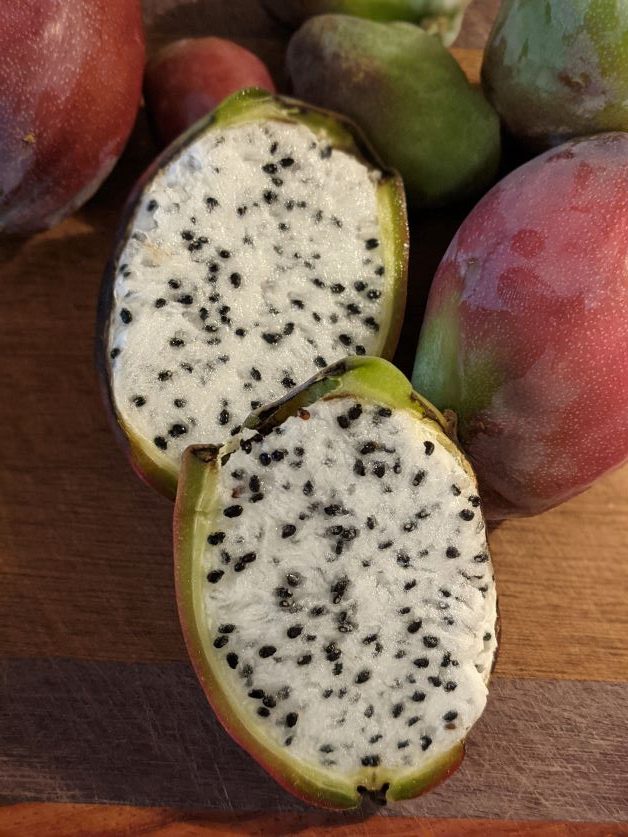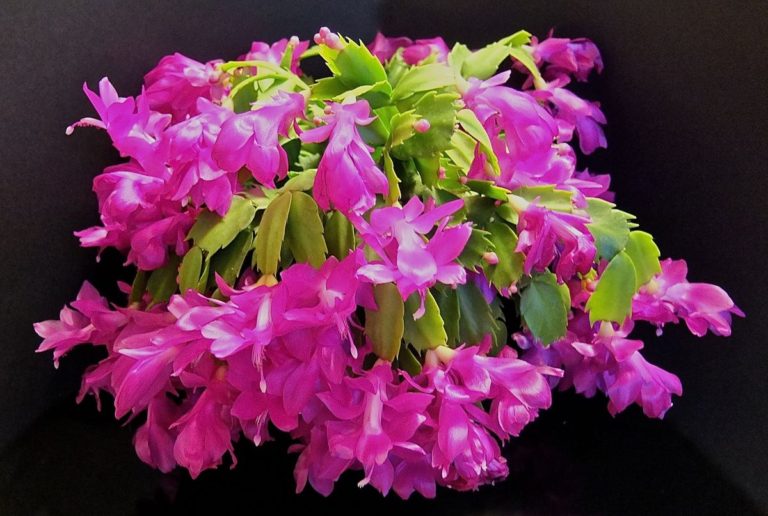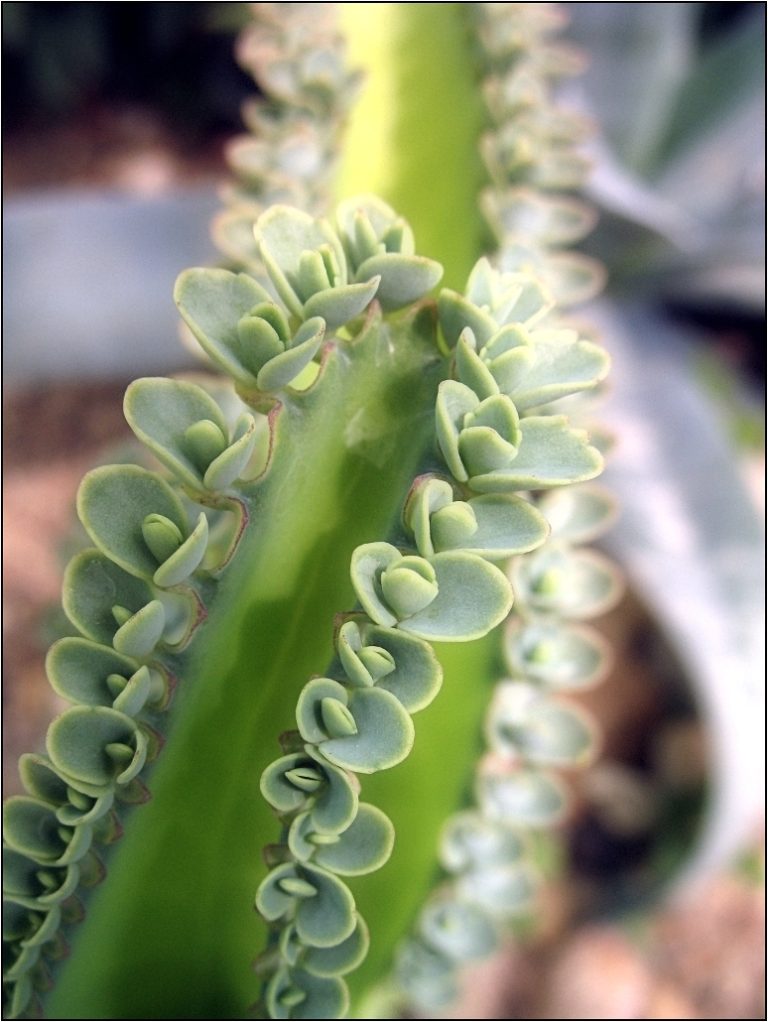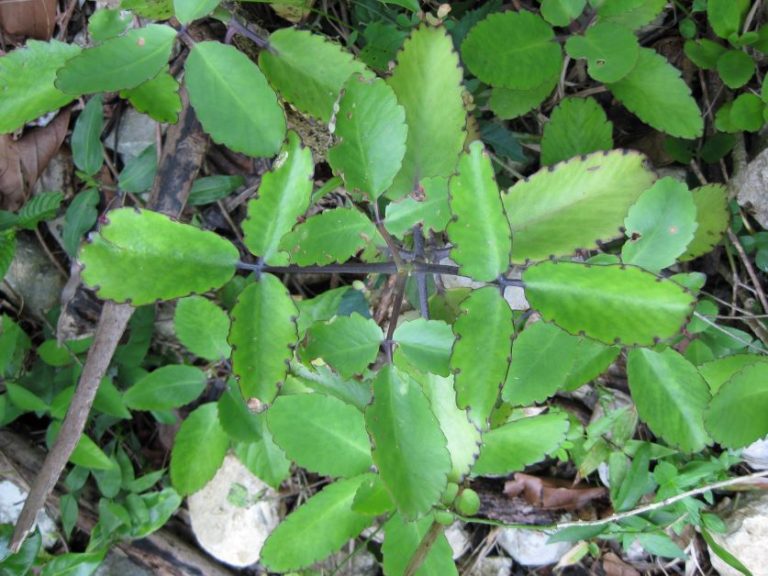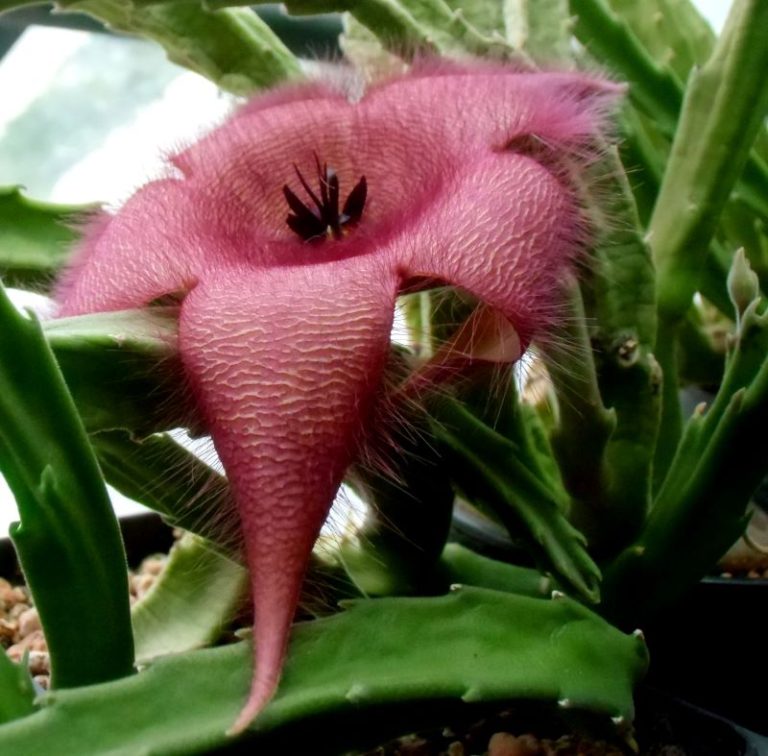What is a Peruvian Apple Cactus?
Last updated: 06/30/2022
Also known as the bishop or hedge cactus, the Peruvian apple cactus (Cereus peruvianus, Cereus repandus) is native to South America. This species has blueish-greenish-grayish skin and long, dangerous spines. Peruvian apple cactus is columnar, which means it grows upright and has a cylinder-shaped body. It also grows many upright branches from the main trunk.
The Peruvian apple is one of the tallest species in the world, with wild specimens reaching heights of up to 33 feet. When cultivated, it gets even taller. A dental college in India did an experiment to see how big their Peruvian apple cactus will grow if it’s supported by a scaffold, and their cactus grew to be 110 feet. This set a new record for the world’s tallest homegrown cactus!
Peruvian Apple Cactus Flowers
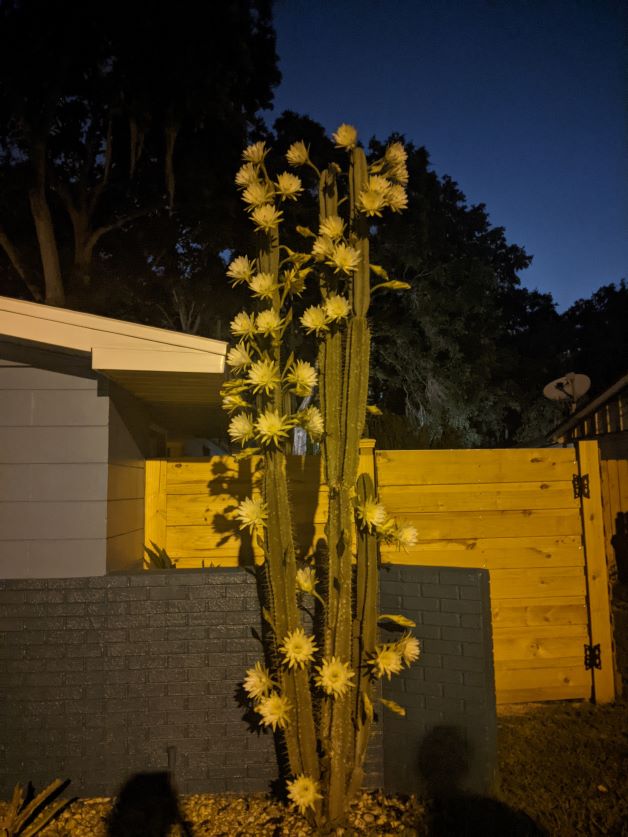
The Peruvian apple cactus is a night-blooming cereus. This means that they only bloom at night or early morning, and each bloom lasts only one day. A happy cactus will have several waves of blooms throughout the summer season, and each wave can put out more than 20 blooms.
Peruvian apple cactus flowers are incredible. Each bloom is between 4 and 8 inches wide, and they’re white with yellow anthers. Although they’re very showy, these flowers don’t have much of a smell.
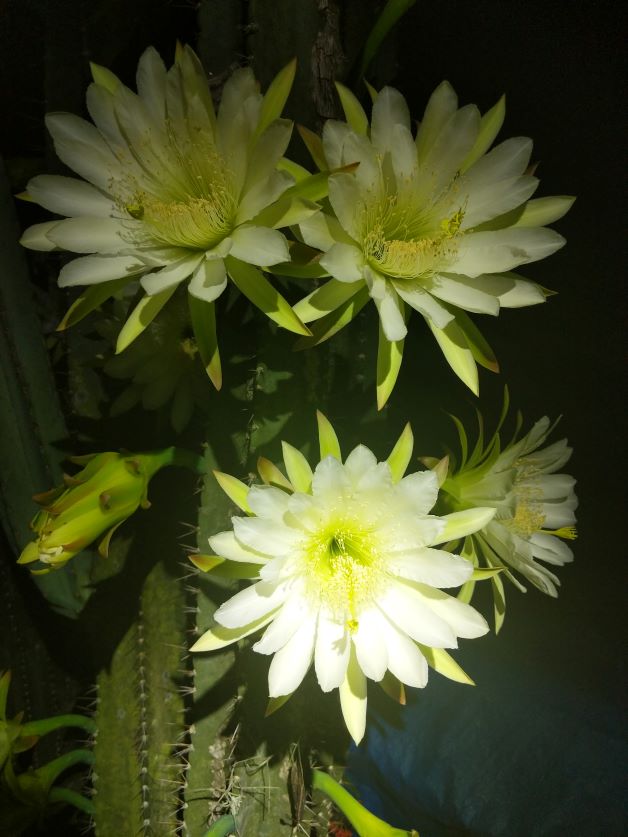
Peruvian Apple Cactus Pollination
Since the Peruvian apple cactus blooms at night, it’s not pollinated by bees like other plants are. Instead, it relies on nocturnal pollinators like moths and bats. When the blooms are pollinated, they turn into a fruit that has bright pink and blue skin with white flesh and black seeds.
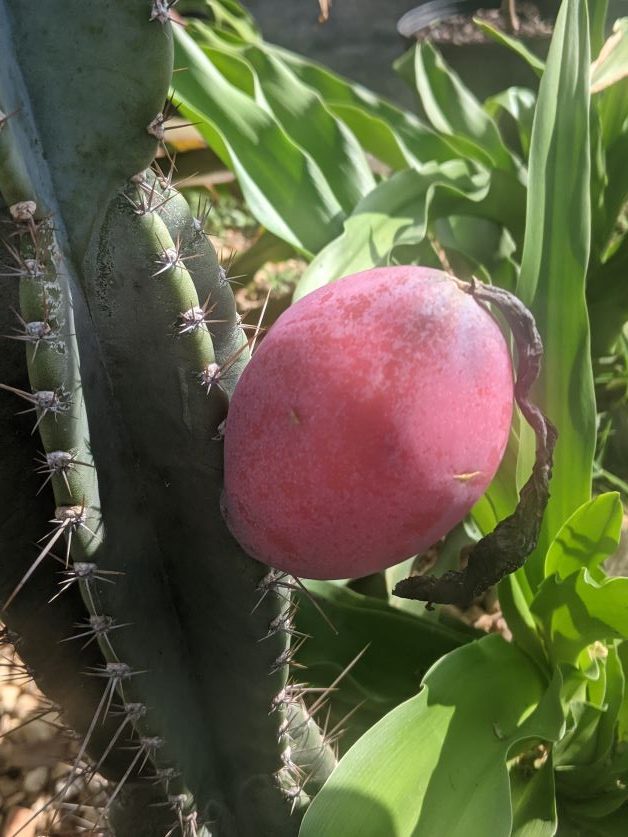
It takes about six weeks for a pollinated Peruvian apple flower to form into a fruit. Some people say that they have to hand-pollinate their flowers, but I’ve never done so. I also live in Florida, so I’m surrounded by critters. If your flowers are rotting and falling off without producing fruit, this is a sign that you need to hand-pollinate.
Are Peruvian Apples Edible?
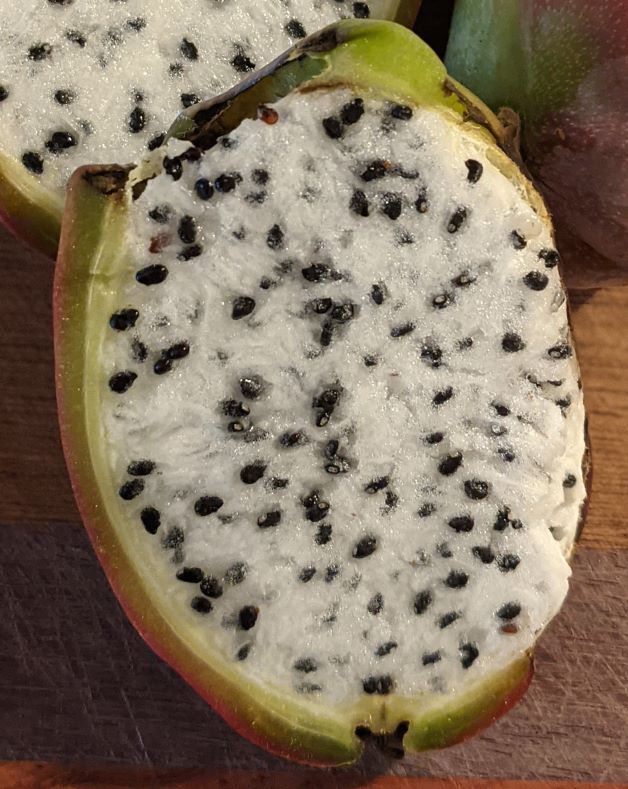
Yes! Peruvian apples are edible and taste a lot like dragonfruit. These fruits are also known as pitaya and are high in beta carotene, vitamin C, and fiber. They have a mild, sweet flavor and a pleasantly crunchy texture because of their seeds (which are also edible).
To eat a Peruvian apple, cut the fruit in half and dig out the inside with a spoon. Throw away the skin when you’re done. Although the skin itself is spineless, sometimes the fruit will have few spines on the end where it was attached to the cactus. Be careful handling Peruvian apple cactus so you don’t accidentally stab yourself.
The fruit tastes much better when it’s cold, so leave it in the refrigerator overnight before eating.
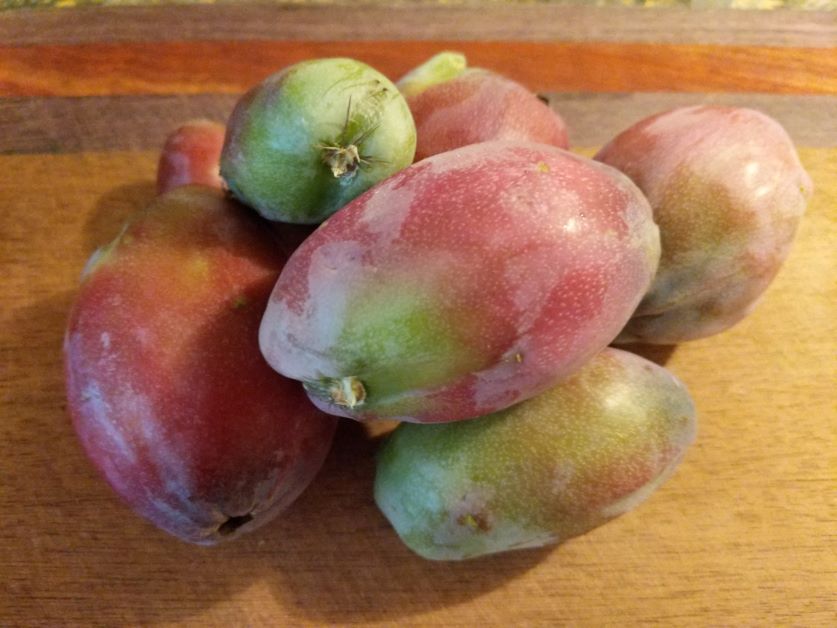
Peruvian Apple Cactus Care
Light and Temperature
The Peruvian apple cactus is hardy in USDA zones 8-11. It needs a lot of sunlight, preferably 6+ hours a day.
Being a cactus, the Peruvian apple also loves the heat. It regularly gets up to 95°F or more in my part of central Florida during the summer and my Peruvian apples have never shown any signs of sun or heat damage. It can also handle small stretches of time in temperatures as low as 20°F, but consistent low temperatures can kill it.
Water
Like all night-blooming cereus, the Peruvian cactus apple needs a wet period and a dry period to produce the most blooms. In its natural habitat (the desert), it rains during the summer and is dry during the winter.
I grow my Peruvian apple cacti outdoors in zone 9B, and I’ve never gone out of my way to water them. I’m also in Florida, where we have rainy summers and dry winters.
If you don’t live in an area that has a dry and rainy season, then replicate a desert watering schedule. Water your cactus more during the spring and summer and let it dry out during the fall and winter. Don’t overwater your cactus – make sure to give the soil time to completely dry out in between watering.
Soil
Peruvian apple cactus is not particular about soil as long as it’s well-draining and sandy.
Fertilizer
Usually, you don’t need to fertilize Peruvian apple but if it looks like your cactus is struggling or it’s failing to bloom, you can feed it slow-release granular fertilizer.
Pruning
Peruvian Apple Cactus Growth Rate
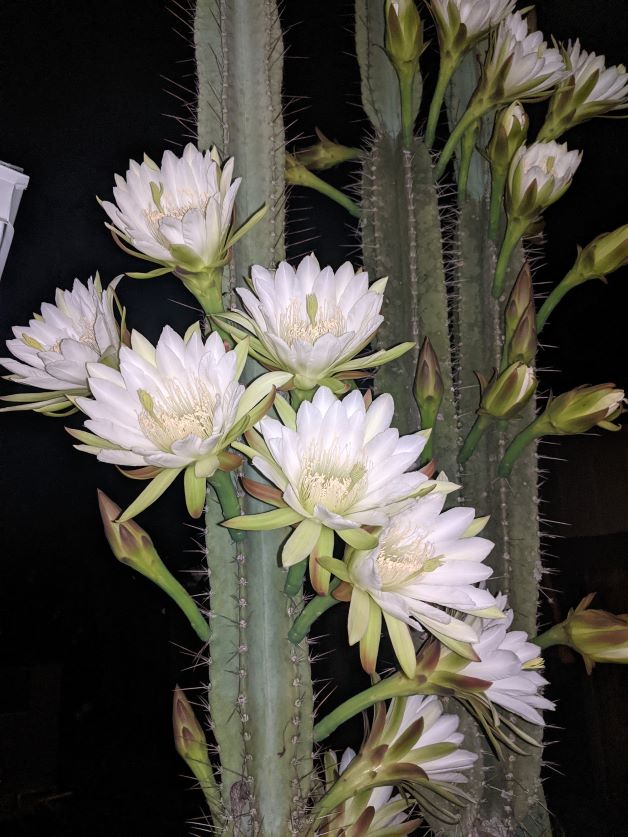
How fast your Peruvian apple cactus grows depends on how much sunlight it gets. If it’s in a spot with direct sunlight for most of the day, it’ll grow faster than in part-shade. A cactus grown in the ground will also grow faster than one grown inside.
A Peruvian apple cactus grown in ideal conditions will grow two feet a year.
Peruvian Cactus Apple Propagation
The easiest way to grow any cactus is from cuttings because they take so long to grow from seed.
Propagating the Peruvian apple cactus is simple. The first step is to get your hands on a live Peruvian apple cactus plant. When your cactus produces a branch, cut it off at the base, stick it in the ground, and water it in. Some people say that you should let your cutting dry out for a couple of days before replanting it, but I’ve never done so and haven’t had any problems.
Since the Peruvian apple cactus grows so tall, I’ve also chopped them in half and replanted the top half into the ground. The replanted top half will then grow as its own cactus.
Finally, I’ve had fallen cactus regrow themselves. I cut down a bunch of Peruvian apple cacti because they were getting too tall. I procrastinated on replanting them and they laid on the ground for months. Over time, the cacti produced vertical branches. This goes to show how easy is to grow this cactus in the right climate.
Be very careful when handling a Peruvian apple cactus – the spines are long and sharp. There is also a mild poison on the spines that will cause irritation for about a week wherever you get stuck.
Can you Grow Peruvian Apple Cactus Indoors?
Yes! As long as you give it enough sunlight, you can grow Peruvian cactus apple indoors. In fact, unless you live in a subtropical or tropical zone, you’ll have no choice but to grow it in a container. When it gets cold during the winter, you’ll have to bring the cactus inside.
If you do grow Peruvian apple cactus indoors, it’ll grow much slower than if it was grown outside. It also won’t be as big. Be sure to keep your pot close to a window so that it can get as much light as possible. A Peruvian apple cactus grown indoors may not bloom, but it’s still possible if it gets enough sun and is in a big enough container.
Here are some tips on growing Peruvian apple cactus indoors:
- If you live in a cold climate, put your Peruvian cactus apple outside during the summer if the weather allows.
- Make sure your container is big (5 gallons or more) and has plenty of drainage holes.
- Use cacti-specific potting mix.
- Don’t overwater your cactus. Keep it dry for most of the year but water it once every week to a week and a half during summer.
- If you do get blooms on your indoor Peruvian cactus, you’ll have to hand-pollinate to get fruit.
- If your cactus starts to grow in a weird direction, it’s not getting enough sunlight.
Peruvian Apple Cactus Troubleshooting
Overwatering
Overwatering your cactus is easy to do if you’re growing it indoors in a container. If your cactus is turning brown or black or starts to get mushy, then you are overwatering it.
Underwatering
If your Peruvian apple cactus starts to turn yellow, this is usually a sign that it needs more water.
Pests
Overall, the Peruvian apple cactus is pest-resistant. If you do have issues, they usually come from mealybugs or slugs.
If you get mealybugs, wipe these off by hand using a piece of paper towel soaked in rubbing alcohol. If you see slugs, check out my guide to garden slug control for more information.
Disclaimer: Offbeet-Gardener is reader-supported. At no additional cost to you, I earn commissions from purchases made through links in this post.

